March is a good time to drum to a different beat. As you plan your garden this year, think about doing something different. Flex your horticultural muscle and mix veggies with ornamentals, add a wildlife pond, grow herbs in containers or add a vine to serve as a host plant for butterflies. Beauty can be had in the most unusual ways.
With the arrival of spring, we want to see beautiful gardens. Look for garden tours, events and symposia. A tour is a great way to explore inspiring gardens, to learn about plants that do well in your region and to walk away with a thousand ideas while having an enjoyable time. Even if you take away only one idea, it will be worth it. My gauge for a successful tour of multiple gardens is when every garden was somebody in the group's favorite.
More regional garden guides
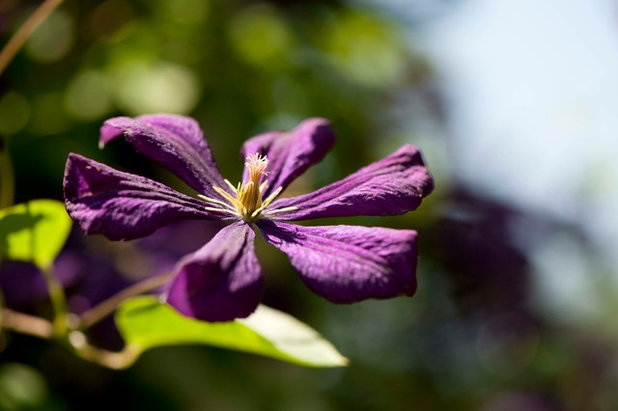
The New York Botanical Garden
Cozy up to clematis. If you have always wanted to plant a clematis at your mailbox, now is a good time to plant one, but only if you have a sunny location that does not receive the hot afternoon sun. Clematis needs good soil and good drainage. Mulch around the plant to keeps the roots cool.
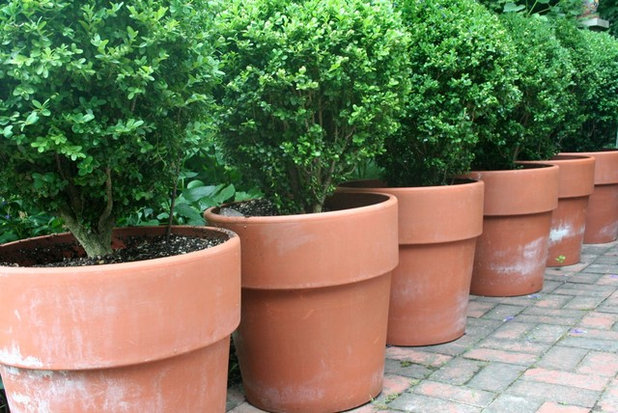
Gardening with Confidence®
Set up a container garden. A container garden is simply a smaller version of a garden bed. Strut your gardening stuff with container gardens; go beyond a single annual for a color accent. Try planting your container garden with veggies, ornamentals, herbs, foliage or succulents.
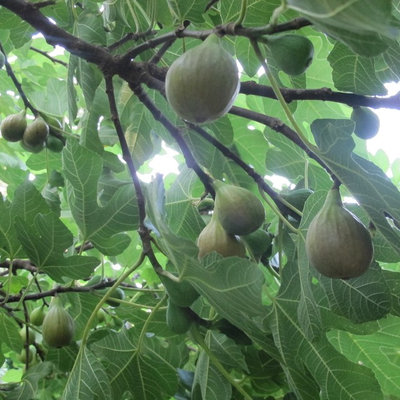
Gardening with Confidence®
Prune fig trees. Damaged wood needs to be removed, even if it means severely cutting the plant. For the best fruit production, figs need to be limed and fertilized.
It takes 1/2 pound of 15-5-5 fertilizer (the numbers stand for the amounts of nitrogen, phosphorus and potassium) for every 3 feet of tree height. For example, a 6-foot-tall fig tree would need about a pound of fertilizer. Spread the fertilizer around the drip line of the plant and just beyond. After you water in the fertilizer, mulch the area around the tree.
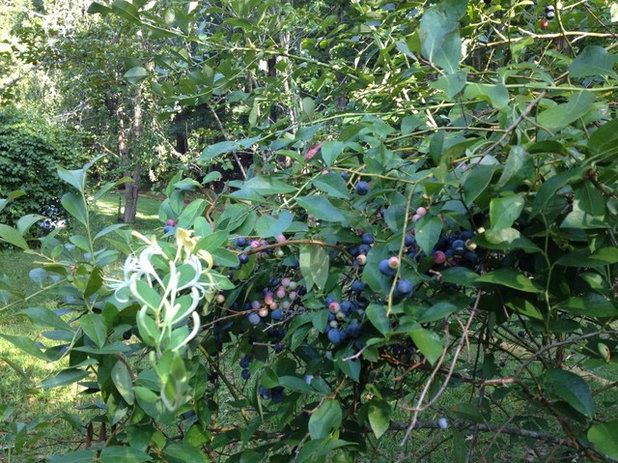
Gardening with Confidence®
Tend to fruit trees. Blueberries can be fertilized lightly, but too much fertilizer may reduce the fruit crop. The same fertilizer for azaleas can be used on blueberries.
Be sure there is clean, fresh mulch around fruit trees and bushes. Keep the mulch away from the trunks to prevent insect, vole and mouse damage. Mulch keeps weeds under control, conserves moisture, moderates soil temperature and may protect ripe fruit that falls to the ground.
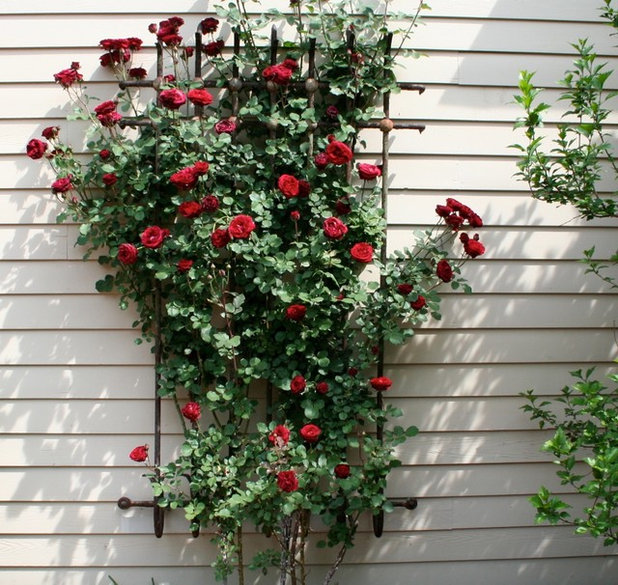
Gardening with Confidence®
Cut back roses. Keep climbing roses to a reasonable size by cutting back one cane to the ground and allowing a new cane to form. If you do this for three or four years, you will have a bush that produces blooms over a broader area, with canes of different heights from the ground up. The younger, shorter branches (canes) will produce more blooms than the older, longer woody ones.
For miniature roses, cut out all dead growth, remove any crowded or diseased canes, and cut back the remaining canes to produce a rounded form. For hybrid teas and floribundas, cut back canes to force new growth. Remove damaged canes. After you cut the roses back, refresh the mulch by replacing the old with new.
When you are finished cutting plants back and replacing the mulch, it is recommended to treat rosebushes with a lime-sulfur spray to combat overwintering insects and disease problems.
Expert Pruning Secrets for Exquisite Roses
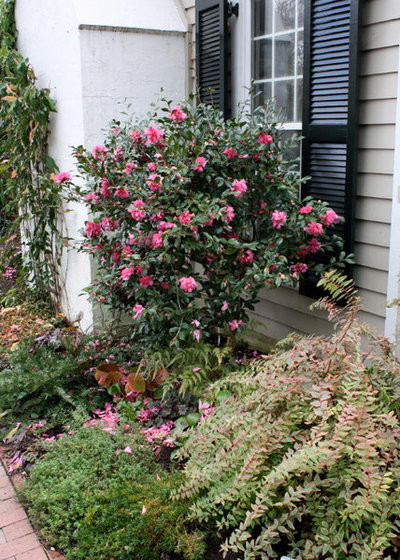
Gardening with Confidence®
Tidy camellia blooms. Spent camellia blooms, particularly with
C. japonicas, are susceptible to petal blight. Remove fallen blooms — and those ready to fall — to prevent the spread of disease and insect problems. If you suspect your faded flowers have blight, don’t put them in the compost pile. Instead, place them in a plastic bag and dispose of it in the trash.
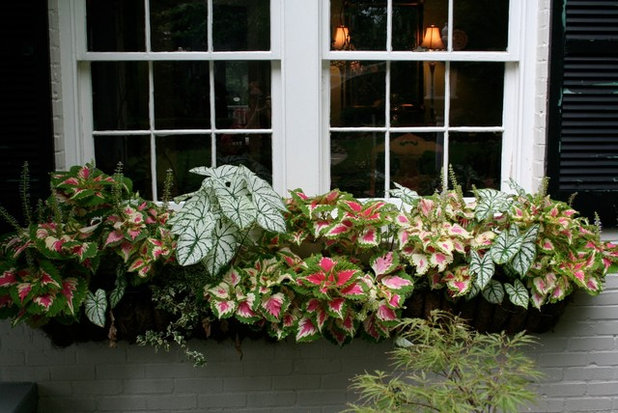
Gardening with Confidence®
Snip some cuttings. If you are overwintering geraniums, begonias, coleus or impatiens, now is a good time to take cuttings. March cuttings will be ready to put in the ground by May.
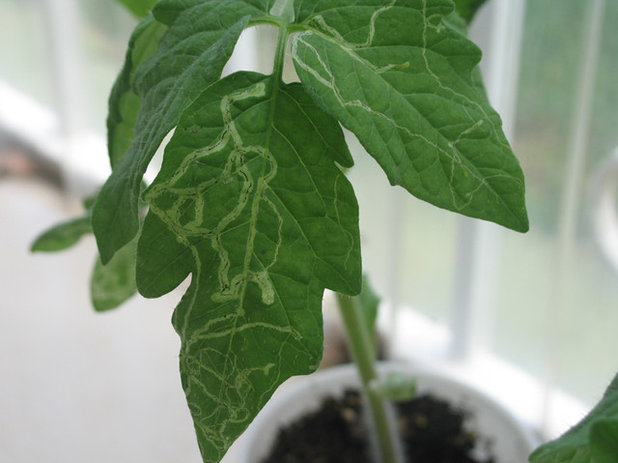 Treat for pests.
Treat for pests. Leaf miners will make their appearance this month. They appear as a swarms of small flying insects hovering around hollies and other evergreen shrubs and trees, then they lay eggs on the leaves. When the larvae hatch, they bore or “mine” into the leaf to form the tunnels. To lessen the problem, you can spray infested plants with a dormant oil to smother eggs.
My absolute nemesis is the vole; it drives me (and others) mad. Voles become active again in March. To help lessen their destruction, keep mulch away from the trunks of shrubs and trees. If you see in what looks like a mouse hole in your flower bed, especially where you grow lilies and other bulbs, it’s likely a vole hole. Stop the madness. Try this: Bait a mousetrap with apple and peanut butter, and set it next to the hole.
Tell us: How are you preparing your garden for spring?
More regional garden guides





